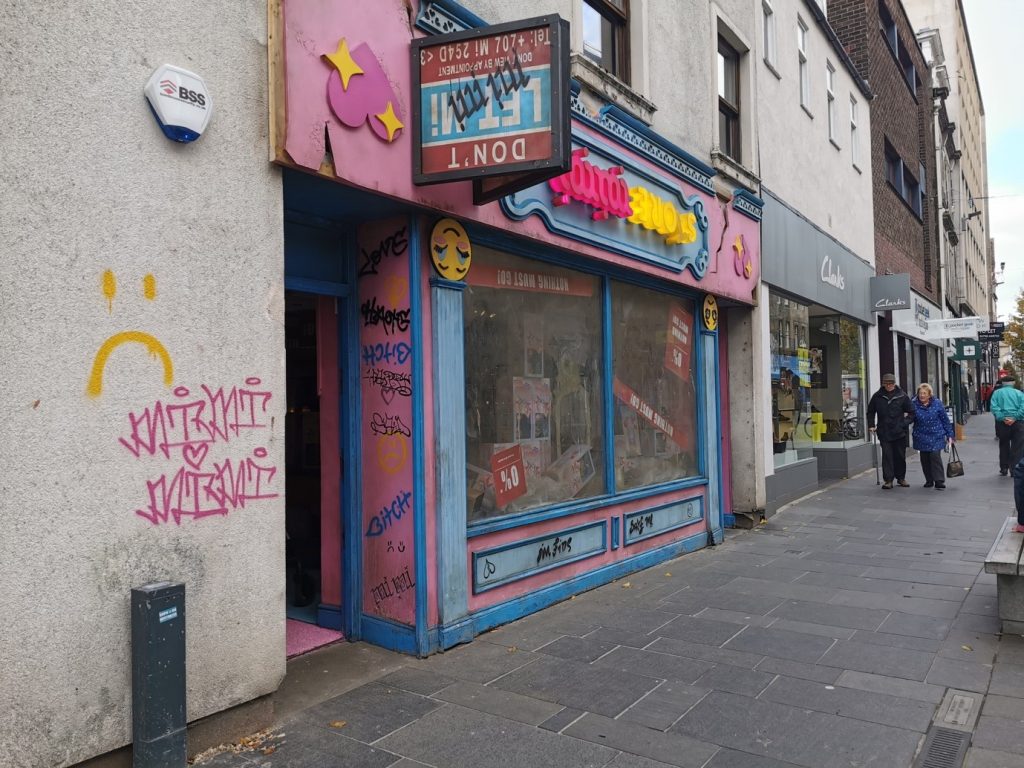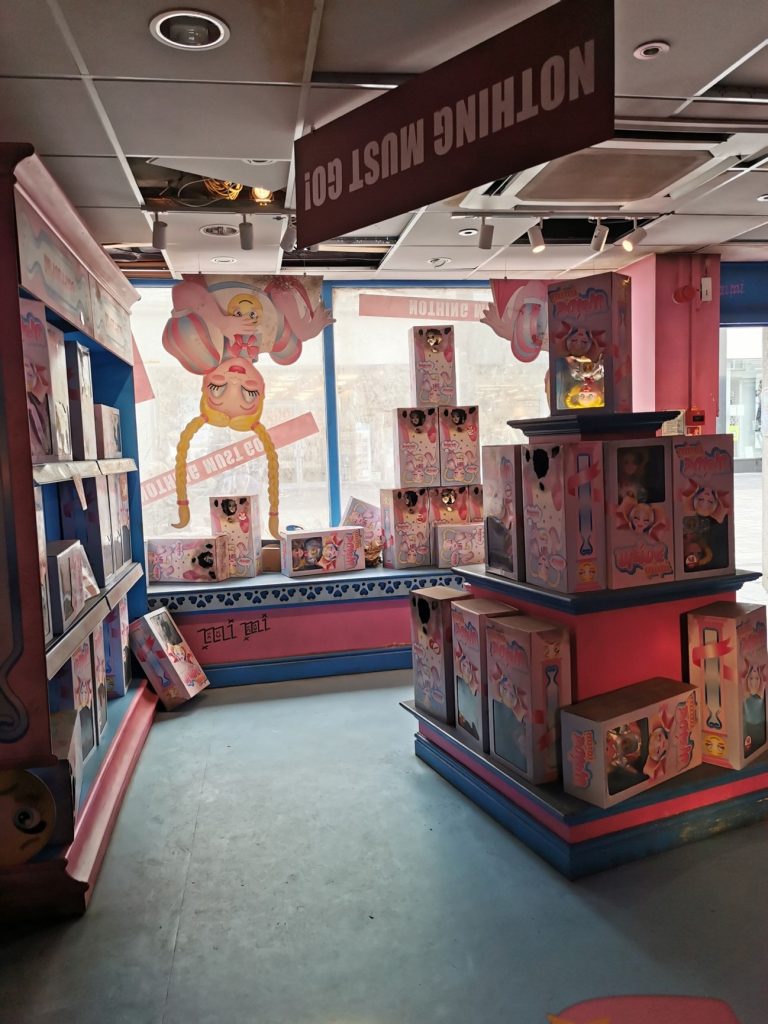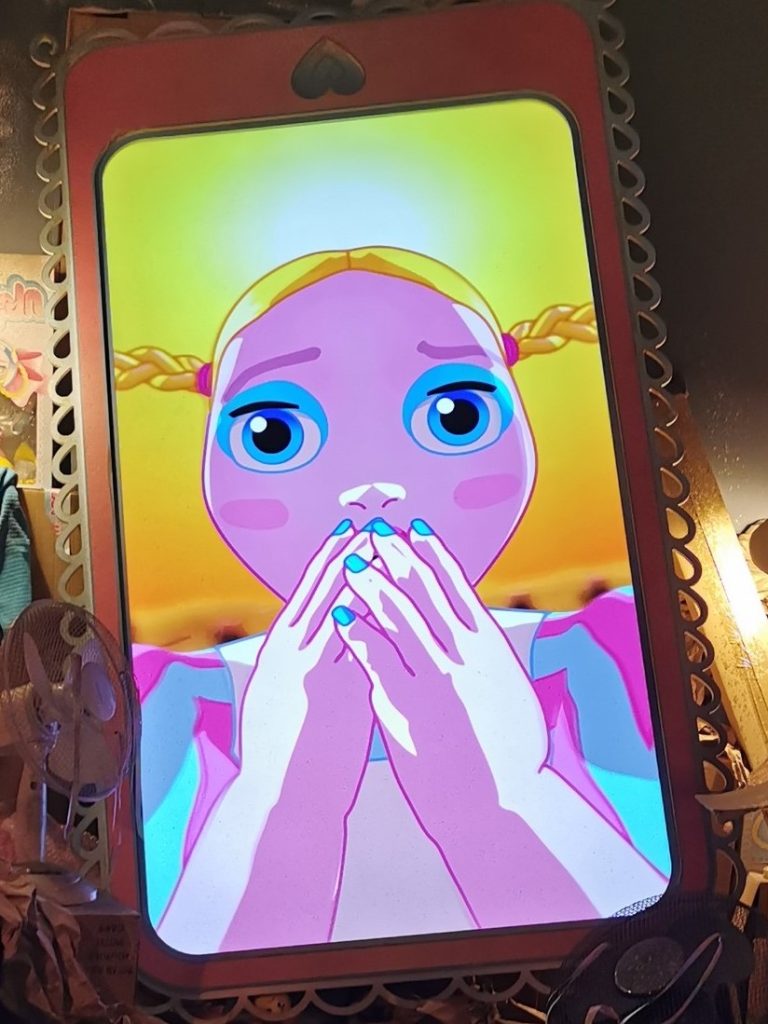MIMI
Rachel Mclean
Jupiter +, Perth High Street until 28th January 2023
Jupiter Artland arrives this year in Perth with Jupiter +, their new remote project aiming to expand their contemporary art exhibitions directly into communities. In the middle of the main shopping road in the heart of Perth, Rachel Mclean adapts her permanent 2021 Jupiter Artland commission, Mimi, off-site, for a temporary installation open to the public for three months.
Known for her ‘candy-coloured’ reflections of pop-culture, Rachel Mclean is an emergent Scottish artist, who combines ‘the seductive and the unsettling’ (as described by Tate) working predominantly with digital video as medium. Mimi is an engaging pop-up exhibition exploring the internal fight with one’s appearance, the toxic social media influence on beauty expectations for women, and a culture fixated on youth.
Like many high streets, Perth has seen many shops shutting down, leaving the once active city half emptied. In this slightly ghostly environment and looking like a relic of a forgotten toy shop, Mimi finds its perfect setting.
From the outside, the exhibition’s similarity to a shop front leaves many pedestrians wondering, confused by the dusty windows of the Mimi store: a baby pink and blue coloured shop, vandalised by graffiti tags and adorned with some upside-down signs and conflicting advertisements reading ‘I’m fine, save me, nothing must go!’ and the familiar ‘To Let’ sign which has been subverted to an upside-down ‘Don’t Let Mi’ board. These are the first visual clues staged on the façade of the out-of-context gallery enticing discerning passers-by to access the exhibition’s unusual space.
Upon entering, you are welcomed by two invigilators posing as friendly shop assistants smiling knowingly from behind the counter. Now you are standing uncomfortably in the small, dishevelled, and darkened shop; looking through the monothematic space, littered with dusty boxed dolls. A pyramid stacked at the centre of the room, a disarray of boxes also forming a window display, others almost randomly shelved.
But these Mimi branded dolls are nothing like the Barbie, Cindy, or Cabbage Patch dolls you would buy for your kids, upon closer inspection you are creeped out instead by two versions of the same unanimated plastic toy. Mimi is tied upside-down, colourful, and smirking behind the transparent film of the front package, appearing through holes at the back of the burnt confections, a sad, grey, and atrophied Mimi haunts you.
Warhol’s Brillo Boxes come to mind, but in a way that directs me to think of questions concerning commodities as well as conventional aesthetic pressure, contagions that are spread and imposed on young minds and amplified through social media. What once would have been the personnel only door of the shop now becomes the adults only access to the video installation: a claustrophobic space crowded by cardboard cut-outs of Mimi along with some backstage objects, a small scattering of foldable chairs positioned for viewing, chairs which in this instance remains unapproached by the estranged and
bewildered audience.
An upside-down framed screen leans on the wall, staged in the messy musty room. The screen itself is ambiguous and could be interpreted as either a phone or a mirror or perhaps both, posing as the distorted mirror of a degraded culture.
Save me is the digitally animated fairy tale played on loop, ending from the beginning, every girl’s nightmare on the reality of dissatisfied appearance. The fight of the ‘me me’ in the solitudes reminiscent of Alice’s Wonderland, where Body Dysmorphia poisons self-esteem in the battle for acceptance.
Mimi explores personal discomfort, the distortion of one’s perception, a reflection on unreachable and filtered contemporary beauty standards. ‘I wish to love Mi but I don’t’, is one of the perpetual thoughts playing in the mind, screaming for help as it axes through one’s ego. Overall, with such an aesthetically compelling installation, Rachel Mclean’s explicit visual metaphor successfully provides insight into the narrative of physical obsession, existential dread, duality, self-absorption, and poisonous societal expectation.
Francesca Tata




Leave a Reply